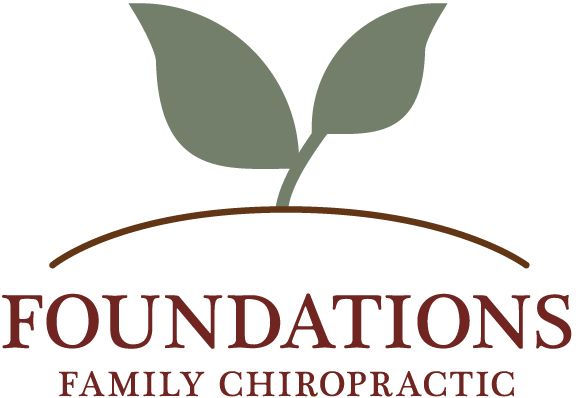Frequently Asked Questions About Chiropractic Care
Got a question? We’re here to help.
-
Q: I’ve heard that once you start to see a chiropractor, you always will have to go. Is this true?
A: Yes and no; It ultimately depends on what your health care goals are. If you seek to relieve pain, you may be needed to be seen a series of times for a few weeks to break the current structural and nervous system pattern that we are trying to correct. You wouldn’t go to the gym to build stronger muscles and lose weight and only go once or twice and expect immediate results. It takes repetition to build muscle memory and strength. The brain is continuously laying down new body-memory patterns. Similar to an exercise regime, Chiropractors are trying to assist your body in creating a new, healthier way so that you can function better. Frequency and repetition are imperative to get the best and fastest results. Of course, every individual has a history of different insults to the body, so frequency and length of treatment plans vary from person to person. Results vary on the commitment to your appointments and home self-care.
Some patients choose to get out of pain and then opt not to come in again until they injure themselves again. Others recognize that similar to getting your teeth cleaned to avoid cavities or getting your car tires rotated or a tune-up to prevent a breakdown, coming for a monthly “tune-up” helps them. We try to encourage this line of thinking in our office!
-
Q: The idea of having my neck touched makes me nervous. Is chiropractic safe?
A: Yes, chiropractic care is very safe for all ages. While no form of treatment is ever indeed risk-free and void of potential side effects, chiropractic care is one of the least invasive and risky treatment forms. As an example of this, all forms of physicians are required to maintain malpractice insurance, and Chiropractic insurance has rates that are just a fraction of what medical doctors are, proving that the risk of injury is far less than traditional medical care.
There is a lot of fear rising from reports associating high-velocity upper neck manipulations with strokes called vertebral artery dissection. However, it is vital to know that more evidence and research suggests that this type of arterial injury is more often with patients who are unaware they have a pre-existing arterial disease. In these cases, patients may come into a chiropractic office seeking relief for the pain they feel in their neck or a headache, but that care is not the cause of the injury. The best evidence indicates that the incidence of artery injuries associated with high-velocity upper neck manipulation is extremely rare—about one to three cases in 100,000 patients treated with a course of care. This statistic is similar to the incidence of this type of stroke among the general population. It is far more common for these kinds of dissections to be associated with everyday activities such as turning the head while driving, swimming, or having a shampoo in a hair salon.
-
Q: I really don’t like hearing that ‘crack or pop’ noise. Can chiropractic be done without that?
A: Yes! However, to clear the air, that “pop” noise you hear is just air escaping from the joint capsules. As your joints move, air should go in and out of those capsules, but sometimes when things get stuck, so does the air. When we apply a quick force (even as gentle as if you “crack” your knuckles), the air pressure in the joint changes, makes a pop sound and releases. This process is called “cavitation.” It can be repeated every 20 minutes or so as the air fills back up.
Now, back to the question. Yes, many chiropractic techniques do not involve “cracking” or “popping” sounds. Many of these low-force techniques are used for people who don’t like the noise, or for infants and small children, the elderly, anyone with significant arthritic changes, spinal hardware from surgeries, and other traditional style scenarios adjustment may be contraindicated.
-
Q: Are chiropractors doctors? What sort of education do chiropractors have?
A: Doctors of Chiropractic (DCs) have extensive education, comparable to that of medical doctors, osteopaths, and other similar physicians. We require four years of undergraduate studies with an emphasis on a pre-medical track and then have a competitive application process to get into a selected chiropractic university. Once accepted, we are required 4200 hours of courses, labs and clinical internships. Our coursework and labs include neurology, human anatomy (including cadaver dissection labs), physiology, pathology, immunology, public health, embryology, pediatrics, toxicology, orthopedics, clinical diagnosis (including laboratory procedures), diagnostic imaging, physiotherapy, microbiology, biochemistry, nutrition, rehabilitation, gynecology/obstetrics and psychology.
Where our training differs is in the specific amount of hours amongst these courses, and of course, we heavily focus our time on various chiropractic techniques and labs. These adjusting techniques and diagnostic procedures are mastered by spending a significant portion of time in clinical outpatient settings. Finally, we are required to sit for our intensive National Board Exams I, II, III, and IV and a Physiotherapy Board Exam.
Learn more about Dr. Courtney Neill and the team.
-
Q: Sometimes I like to twist my own back or crack my neck – it feels good! Is it okay if I do this?
A: No, we don’t advise this. When a chiropractor is adjusting your spine, we have evaluated the specific vertebrae that are out of alignment and are applying a very methodical line-of-drive to correct the position it is stuck in. If you find yourself regularly needing to “crack” your spine, consider this: When a vertebra is stuck, the rest of the body wants to create a compensatory pattern and more movement to the region where something is stuck in efforts to restore some range of motion. Only a skilled physician can assess which vertebrae are not in the correct position and move them. When you “crack your neck,” you are probably moving the vertebrae that have already become hypermobile (more moveable) in response to the stuck joint, and worse, making these hypermobile joints more prone to ligament laxity and injury.
-
Q: Can I go to a chiropractor if I am pregnant?
A: Yes, and regardless of whether or not you are in pain, it’s a great idea to go to make sure your hip alignment is optimal for your baby’s position in utero, and also to have an easier, more comfortable labor. For the safest prenatal chiropractic experience, it is recommended to seek out a chiropractor who is Webster Pregnancy Technique certified by the International Chiropractic Pediatric Association. Dr. Courtney has been Webster certified since 2012 and regularly sees many pregnant patients in her practice. Not only that, but she has also been pregnant three times, so she can very much relate to the joys and challenges of being pregnant!
Read more about prenatal chiropractic.
-
Q: Is chiropractic care only for helping neck and back pain?
A: No, we can help so much more than just that! Many patients come into our office seeking assistance for several ailments ranging from headaches and migraines to hormonal imbalances, sleep disturbances, digestion challenges, allergies, frequent colds, low energy, anxiety, etc. While chiropractic can not diagnose and “treat” any of these specific conditions, we can help your body’s nervous system coordinate better with the organs and glands that are showing these symptoms.
Your nervous system is encased and protected by your spine, hips, and cranial bones, and is responsible for regulating everything in your body functions. Suppose there are any restrictions, misalignments, or traction forces placed onto these areas. In that case, it will put a strain on the nervous system and cause a change to the neurological input to any of these systems, resulting in pathophysiological changes, or dis-ease, to the body.
Chiropractors call these kinds of restrictions “subluxations.” They are trained to detect and remove them, so the nervous system can better receive information from the external environment, process it, and then tell your body’s organs, tissues, and glands how to respond appropriately. In short, chiropractic care helps your nervous system function at its best, so you can be your best!
-
Q: My child isn’t complaining of any pain – why would I take them to a chiropractor?
A: Just like you, your child is born with a nervous system dictating how it can function in his or her environment. More so, now is the critical time for your child’s nervous system to be laying down the foundation for how WELL it will be able to do so for the rest of his or her life! Science has shown us that in the first two years of life are the most critical neurological development time. Any structural insults to this system (like in utero or during the birth process) will alter this process by affecting how your child receives information into his or her brain. When this happens, the brain’s centers responsible for proper milestone development will be interfered with, creating challenges to developing, learning, and growing. Furthermore, negative compensatory patterns can become established, resulting in uncomfortable structural problems and learning disabilities, focus challenges, immune system challenges, hormonal, digestion, or sleep disturbances.
Find out more about pediatric chiropractic.

© 2024 Foundations Family Chiropractic
Site Map
Contact Info
